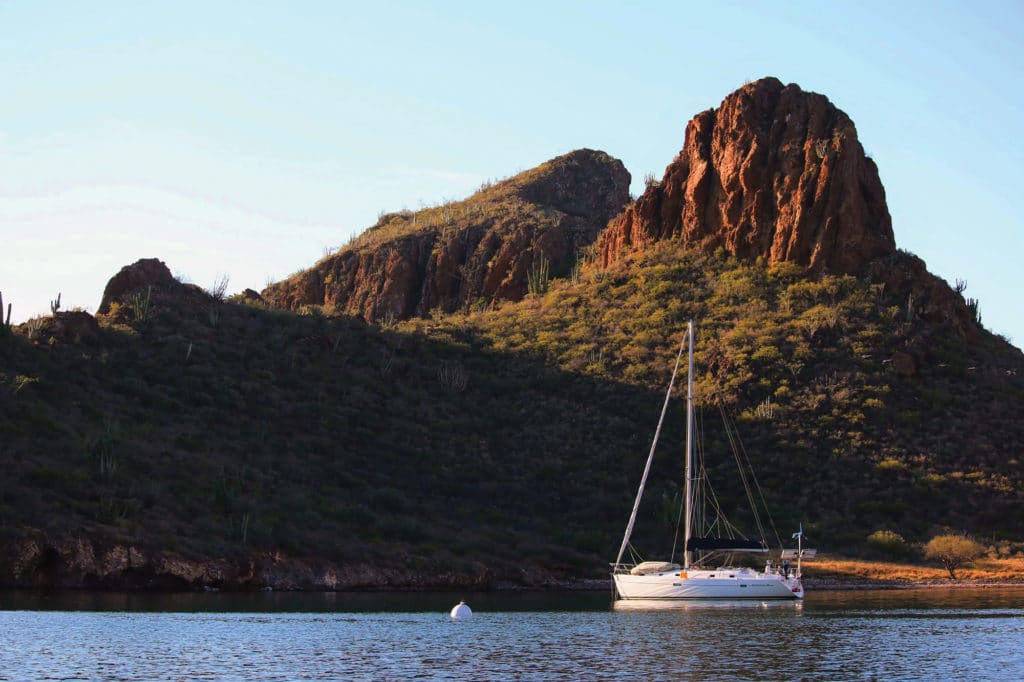
I had a small adventure of the grandest kind in November 2019. I arrived by air in San Carlos, Mexico, where I launched my Beneteau 361, Liberte, into the northern Golfo de California, better known, perhaps, as the Sea of Cortez. For the next 10 days I sailed alone through one of my favorite cruising grounds on the planet. § The sailing began, like many good trips, with a pre-dawn start. I woke at 0344, just before my alarm. The tools of the trade lay where I’d placed them: headlamp, life jacket, personal locator beacon and harness. By the headlamp’s red light, I started the Yanmar engine, readied the North main and hauled the Manson anchor, all familiar allies I’d been away from for too long.
I paused for a moment to take it all in. There were dark cliffs on either side, with the sharp smell of guano from the rocks. The moon was just setting, and by its pale light I could make out the twin peaks of Mount Tetakawi above.
Six days earlier, Liberte had been high and dry. With help from local contractors—along with fellow sailors who were kind enough to offer rides to town—and several days of my own sweat equity, she’d been prepped, polished and provisioned. Liberte’s hull now wore fresh coats of Ameron ABC 3 antifouling paint, with extra layers at the leading edges and waterline.
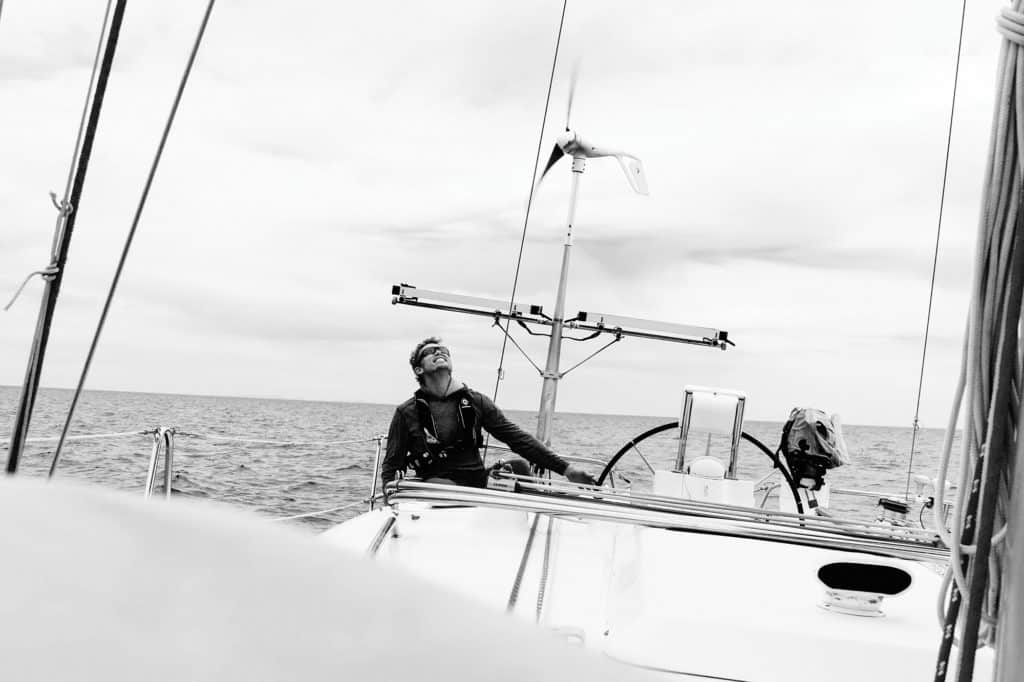
I’d slept the first night on board in the yard, climbing a ladder, happy to find that my boat had weathered summer well under the landscape fabric for shade. There was the anticipated layer of Sonoran dust on deck. Below, everything was just as expected. I’d bought Pollo Loco chicken for the painters, and I took the leftovers down to the guard shack. The night guard and I spoke primitive Spanish, sat on overturned buckets and ate with our hands, watching bats fly out of the desert. We saved scraps for the boatyard cat.
After paying all those dues in boat bucks and labor (one boat buck = $1,000), I relished my first evening on the hook. My neighbor was an Austrian named Peter who’d just bought an Endeavor 35 and was as stoked as can be. I paddled over to his pride and joy, where we sipped well-aged tequila with sailors from around the world. It was a nice welcome back to the cruising life.
Now in the dark I waved at Peter’s boat as I passed; nobody stirring at this hour. I booted up the iPad mini, and a chart came to life. Time of departure: 0400. I hoisted the main hand-over-hand, leaving one precautionary reef. Today’s job was to take Liberte 74 miles west across the Sea of Cortez.
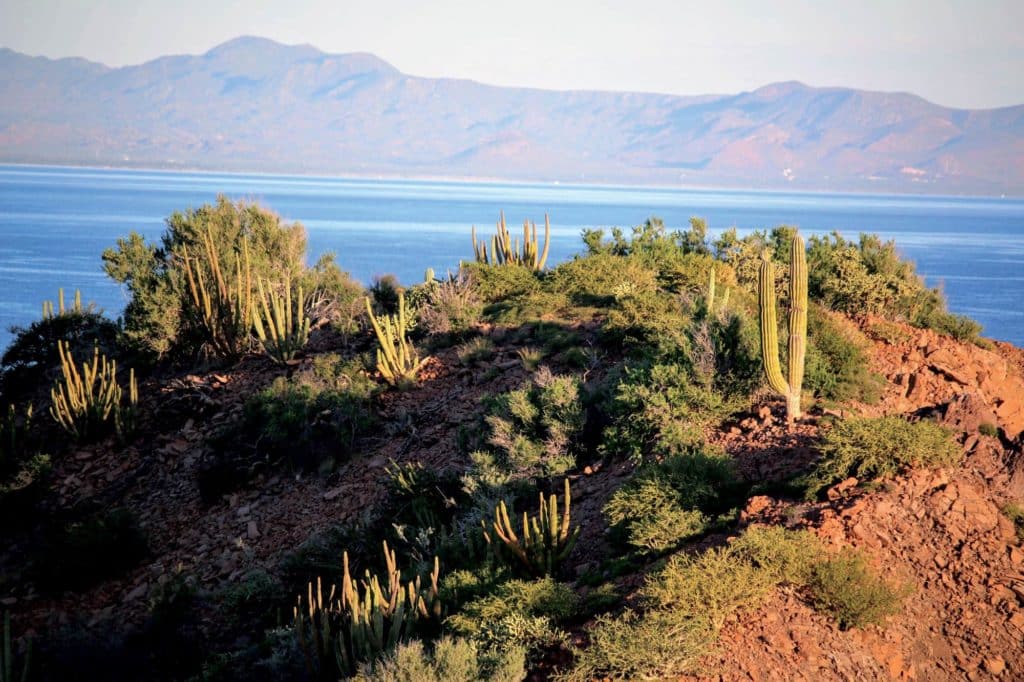
A wave rocked the boat. An inland sailor in summer, I felt my body adjust to the motion. More waves came, refracted around the headland, and then gusts of wind in the dark.
I grinned. Lately I’d made a point to pay close attention, moment by moment, to everything, including my response to those things. Sailing was a way to hone that attention. When I felt unsettled, I’d grin and be grateful. I’d look at everything, as author Betty Smith says, as if seeing it either for the first or last time. What was I grateful for right then? Freedom to move. The consistency of water. This boat and the ability to guide it.
Onward, then, trimming the main to the new wind as I cleared the point, looking back at the lights of shore, just once, then ahead into trackless waters, pretending I was bold Joshua Slocum off to hurdle the globe. Or any adventurer from the books I adored as a boy. I don’t lay awake longing for Arctic ice or infamous capes, but I’m crazy for outings like this. I love the planning, the preparation and the little voyage itself. Being solo, I was discovering, further sharpened everything.
A beam wind now, and I could unfurl the jib and shake out the main. The boat felt great in my hands. The wind instruments were acting up again, so I sailed seat-of-the-pants, sensing subtle changes and responding. I kind of liked it this way anyway.
Just days ago, these sails were in bags, lines bundled, Liberte lonely and landbound. Now she was on the move again, at play in the elements, and I was fortunate to be along for the ride. I shut down the engine, and it was just my boat, the wind and me.
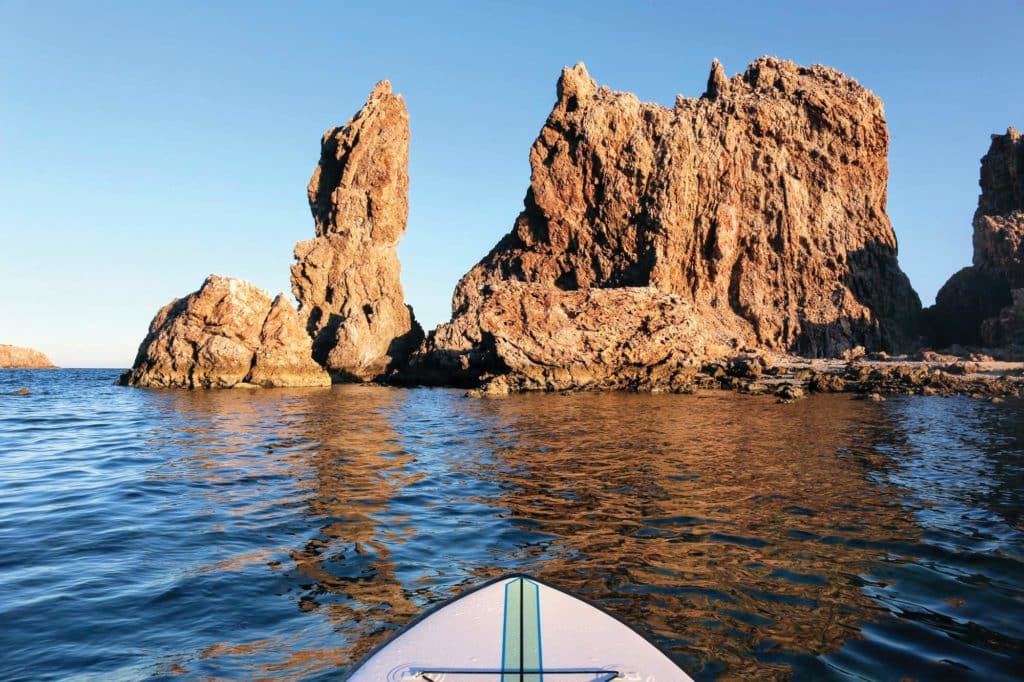
Land was shrinking astern, with all its information, obligation and illusion. Now the only thing was to coax the boat along her cantering path and stay connected with her. Alone, with thousands of feet of water below me. Destination: unfamiliar.
Now was as good a time as ever for dread. Or, instead, to allow that separation from shore to strip away all the detritus of ordinary life.
I took some sharp breaths into my belly, ready for action. I checked on my little realm: harness clipped like I promised my sweetheart, sails trimmed and pulling nicely, lines flaked, and autohelm steering the proper course.
What would my mentor Gartly do? He’s the pied piper who first lured me to sea; he’d told me last night when I texted him my float plan, “Enjoy the stars.”
So I did. I stretched out on my back, hands laced behind my head, and contemplated the unspoiled night sky. I gazed up at Orion, Taurus, and those lovely and coy Pleiades. Then I saw a UFO. At first I thought it was a satellite, but it was moving way too fast. It stopped, jumped and stopped again. Then it was gone.
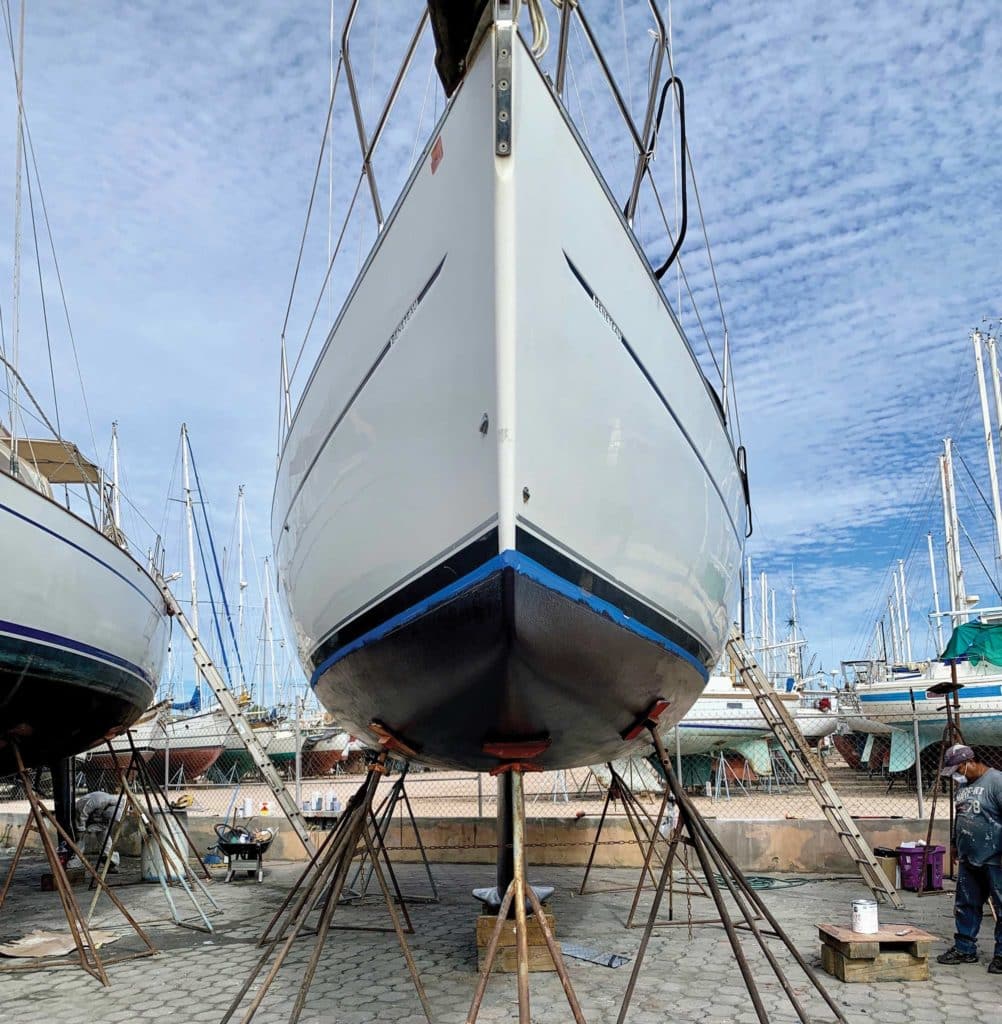
Dawn came under the clouds and painted the edges of everything. I grinned again, this time from genuine pleasure. After 15 years and plenty of cruising miles, I knew this boat profoundly. All her parts and pieces held their stories. I’d learned my way through systems stem to stern, and the rest would be on the punch list soon enough.
How beautifully she purred along! I knew better than to touch a thing. Instead I did some shadow boxing and cockpit calisthenics. I thoroughly enjoyed a bowl of homemade granola that had been tucked into my sea bag, my girl’s loving way of keeping some meat on my sailor bones.
The wind was remarkably steady, the right choice made to sail today on the tail end of a norther, between too much wind yesterday and none tomorrow. I felt, as always in prime conditions, as though I were getting away with something.
The sun paced me lazily behind clouds. Land began to appear in floating specks—there in the corner of the eye; gone if you looked right at it. I saw no garbage and no other craft, just the faint smell of an oil rig on the wind for a long time before I could hear its far-off rumble.
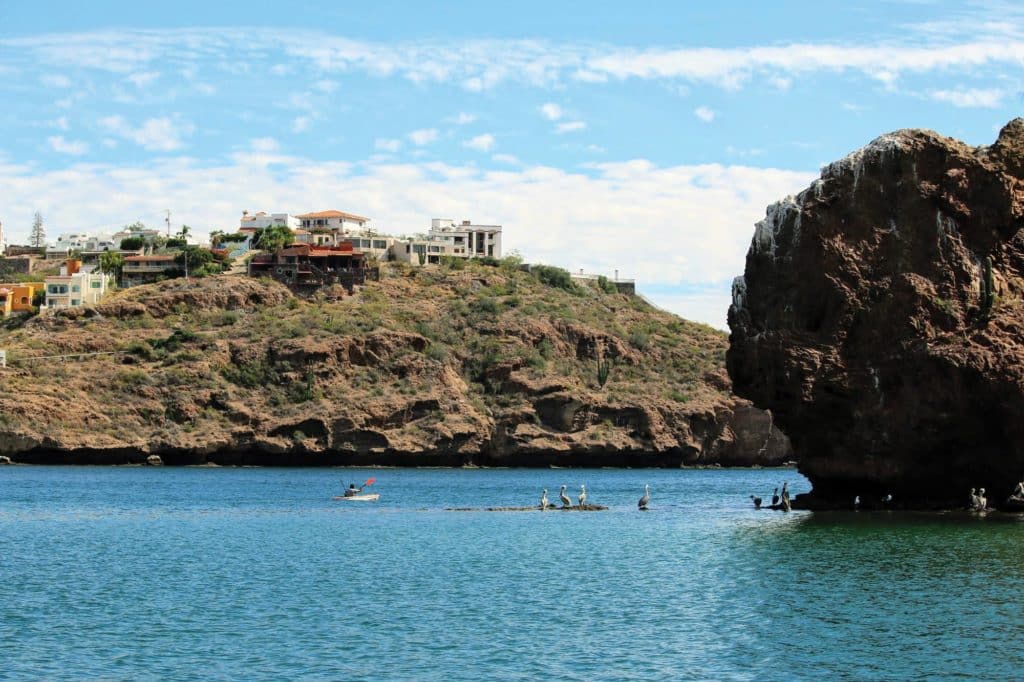
I shouted poetry to the clouds and belted vintage songs in a voice that would have scared Tom Waits. I considered, one by one, the extraordinary people I have been so fortunate to know. I thought about those I love and have loved, their presence close out here in the empty reaches.
The north wind was a steady companion, and Liberte ticked off 1 nautical mile after another. I was pleased to see stretches of 7-something knots for speed—a good day in any small cruising boat. I took the helm sometimes for the sheer fun of it. The only time I changed gears was for a couple of slow-moving rain clouds. “De rain kill de wind,” as the Bequia sailors used to say.
And then, there it was, the intended harbor, and I performed the rituals of arrival. A look at the charts, the dowsing of sails, and I glided into the wide and placid protection of Bahia Santa Inéz. The anchor touched sand at 1600 hours. A textbook passage, which is not always the case. The boat rocked gently as I tidied up the deck, lovingly rubbing down my little steed after such a fine gallop.
The sunset was transcendental. It began with chiaroscuro effect through the peaks of the Sierra de la Giganta. Then the light turned gold and slowly purple as beams shot skyward. That sunset continued to reach out across the water until it had engulfed my sailboat and me in an overwhelmingly beautiful moment. I forgot every bit of time, boat bucks and worry I’d spent to be here. I simply was.
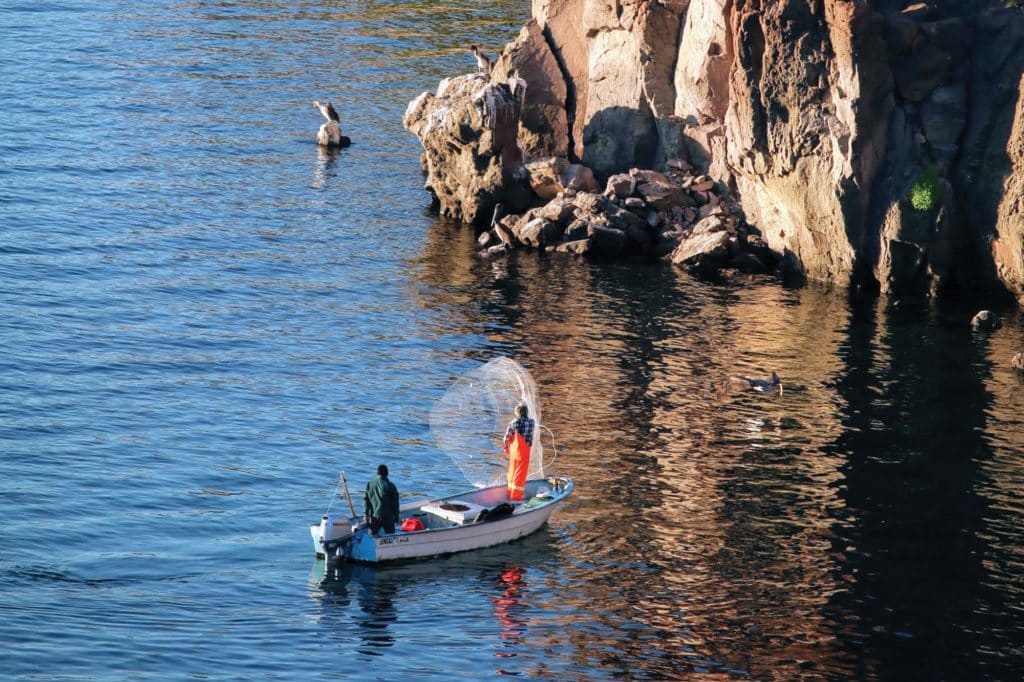
For the next week or so, I stayed in that blissful state. I slept when tired and ate when hungry. Doing my simple boat chores, I chopped wood and carried water, as the Zen koan goes.
Heading south down the Baja coastline, there were dozens of great anchorage options. There are no ocean swells in the Sea of Cortez. The wind waves can be steep during winter northers due to fetch and current, but this time of year, I had stellar weather. I sailed every day on the afternoon sea breeze. I saw dolphins off the bow, whales in the distance and rays jumping out of the water.
It had rained more than usual recently, and the mountains were as green as I’d ever seen them. In San Juanico, a splendid anchorage of rock spires and long empty beaches, I rambled into the hills and found the desert full of life. There were flowers everywhere, along with butterflies, bees and birds. An osprey had nested on a strategic outcropping, the best real estate in the bay, and was working the shoreline for fish.
At Isla Danzante, near Loreto, I was tickled to find my favorite anchorage open: a one-boat corner of Honeymoon Cove. If I weren’t in an alternate reality already, this place sealed my fate. I spent hours clambering mindlessly around, watching the light change on the desert and the sea. Thumb-size cactus thrived in the cleft of a rock, and fish bones lay where something had made a meal.
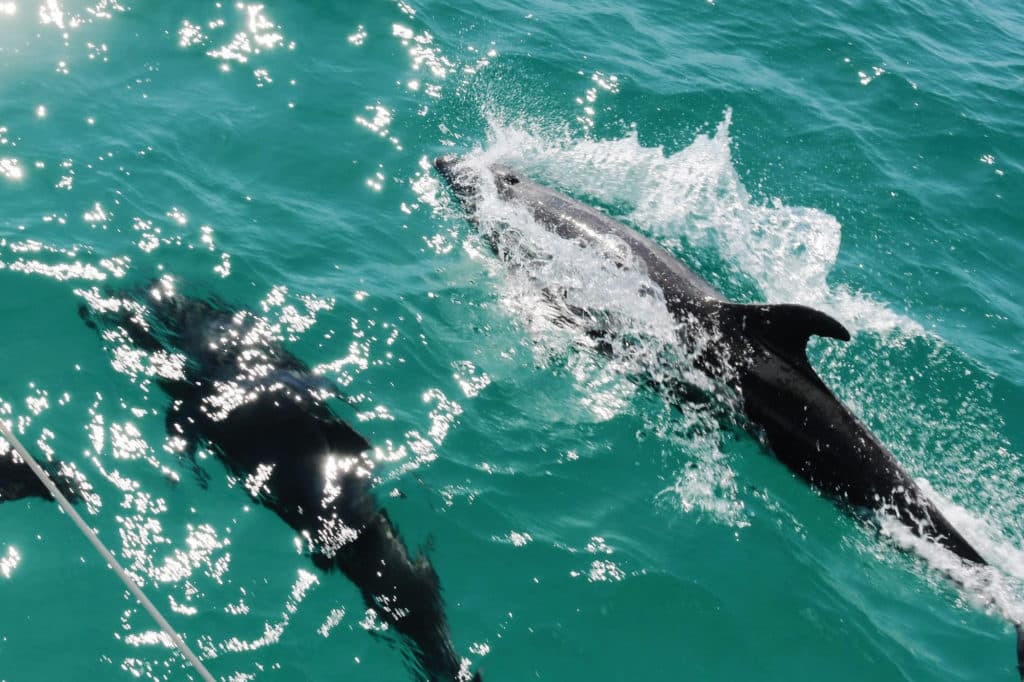
There was another boat around the corner, and normally I would have stroked the paddleboard over to say hello, but I didn’t want to break the spell.
I saw huge schools of baitfish flashing in the clear water, with roosterfish hitting them from below while pelicans dived from above. Most days I could empathize with those fish, but today I simply felt a part of it all—predator, prey and curious observer at the same time. Cormorants took off, leaving dark rings in their wake. A yellow-crowned night heron waited. I was hopelessly enthralled.
Truth be told, I was perfectly at peace doing absolutely nothing there. I had guests to pick up soon, but I waited as long as possible. That last night at the island, spent with just the critters and me, will be with me always.
As I chugged toward nearby Marina Puerto Escondido the next morning, I saw that I had come full circle.
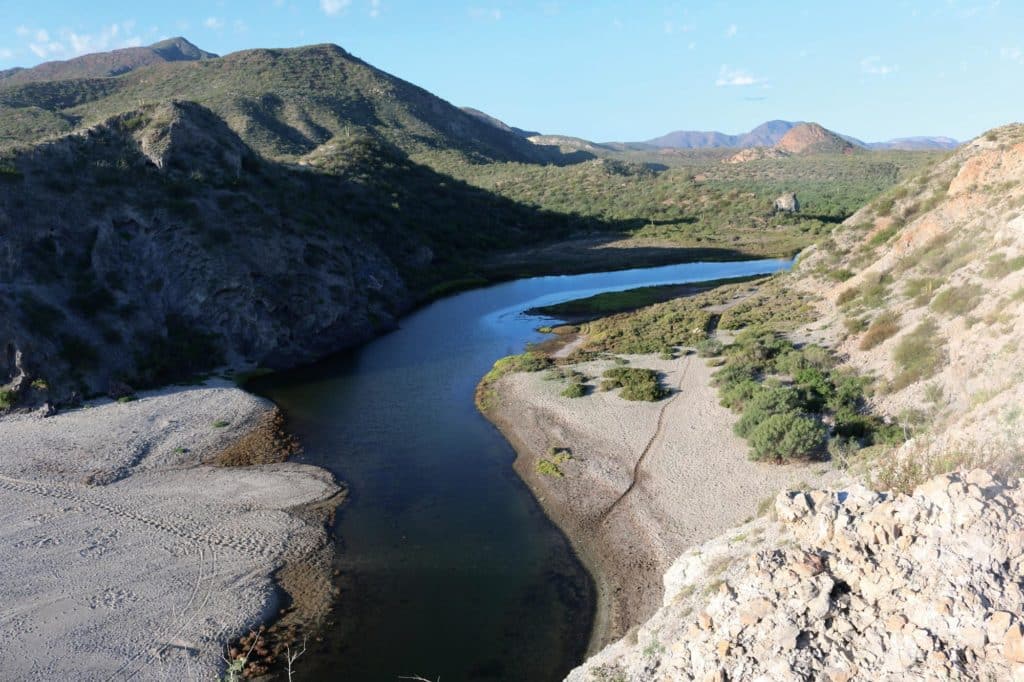
This harbor was the first place I’d ever stepped foot on a cruising boat. As a young man, I’d coaxed a battered Toyota pickup down Highway 101, stacked it high at San Diego’s chandleries, and hauled my contraband south to meet Gartly’s Cal 34, Marlin, at this very seawall.
From here, I’d helped him prep Marlin and sail her partway across the Pacific. My life had never been the same. In good times and bad on boats, I can always blame Gartly for that.
“Back to the scene of the crime,” I said out loud to nobody.
I realized it had been a while since I’d talked to anyone but birds and dolphins. Maybe I was due for some human contact. I swung the bow toward what we call civilization.
After several seasons of East Coast cruising, David Kilmer and Liberte are back in Pacific Mexico.








